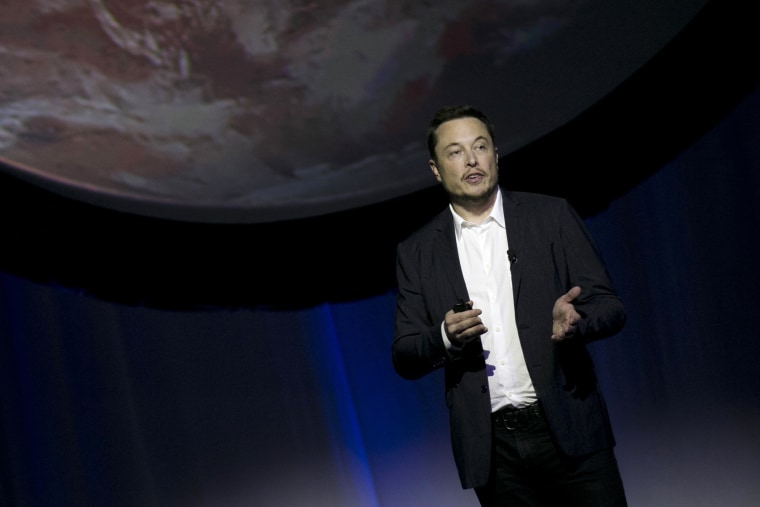Future space settlers, listen up — Elon Musk has more details about what your life will be like on Mars.
In a Reddit "Ask Me Anything" interview on Sunday, the SpaceX CEO filled in some of the lingering questions about his plan to colonize Mars.

Among the details: a community of glass domes, and tunneling droids that can create underground passageways.
Related: Elon Musk Makes His Case For Colonizing Mars
When asked about the first habitats, Musk said they will be geodesic domes on the surface of Mars, made of glass and carbon fiber frames.
"Plus a lot of miner/tunneling droids," he wrote. They can "build out a huge amount of pressurized space for industrial operations and leave the glass domes for green living space."
It's still preliminary, but Musk believes we could have a fully sustainable civilization on Mars in 40 to 100 years.
He said the first human mission to Mars would ideally be a dozen people who could help "build out and troubleshoot the propellant plant and Mars Base Alpha power system," he wrote.
The SpaceX CEO delivered a speech last month called "Making Humans an Interplanetary Species" at the International Astronautical Congress in Guadalajara, Mexico.
The SpaceX Red Dragon could be sent on an unmanned test mission to Mars as early as 2018.
If everything goes according to plan, the first mission could launch by the end of 2022, although Musk has said the timeline could change.
Musk envisions 100 to 200 people per spacecraft, with the trip taking between 80 and 150 days, depending on the time of the year. Mars is closest to Earth every 26 months, making that an ideal time to make the journey.
Once on Mars, a propellant production plant would be built and that fuel would be used to return the spacecraft to Earth, where they could again be reused to bring back visitors — drastically lowering the cost of a ticket, which he currently estimates at $500,000 per passenger.